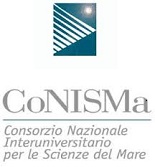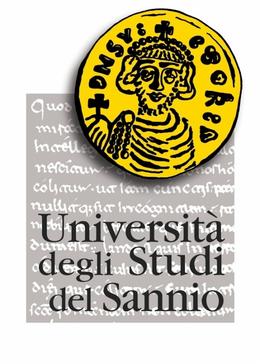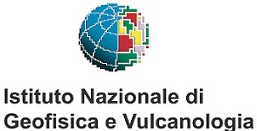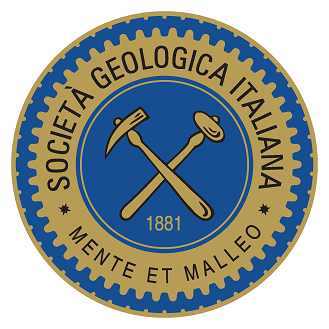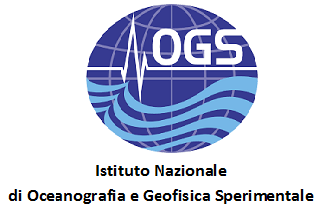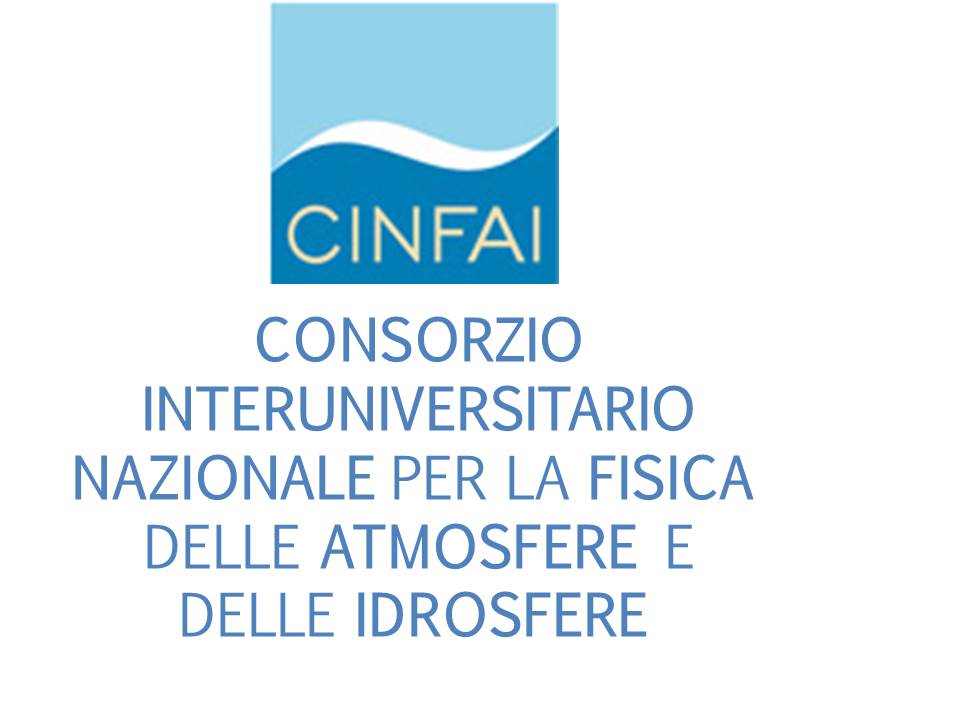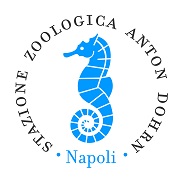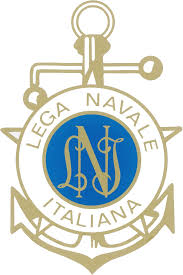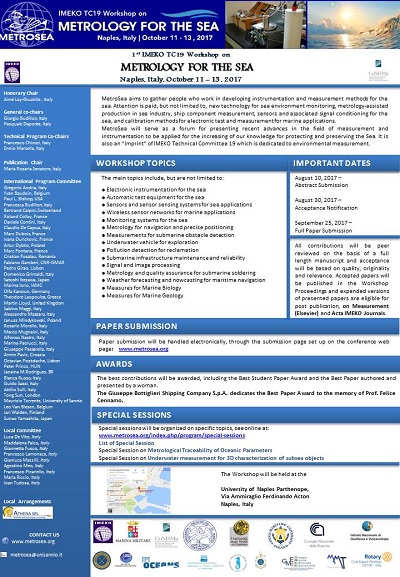MAIN SIGHTS IN NAPLES
- THE ROYAL PALACE

At the end of 1500, the news of the possible visit of King Philip III in Naples, created quite a stir. The capital of the Viceroyalty, in fact, had no place to house the most powerful man in the world. After endless thoughts, the viceroy Don Fernando, ordered the construction of a residence for the distinguished guest. The Royal Palace was commissioned to Domenico Fontana in 1600, which gave it after only two years, although not completely finished. Too bad, that the capricious King Philip III changed his mind without warning: put off his visit to Naples to date. You who are the luckiest of the King, visit the Royal Apartments, the Royal Chapel, the gardens and the Teatrino court.
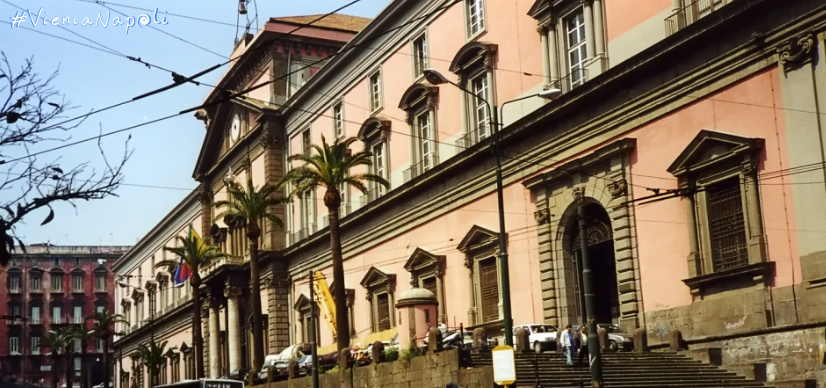 ARCHAEOLOGICAL MUSEUM OF NAPLES
ARCHAEOLOGICAL MUSEUM OF NAPLES- Before riding school and the University, the Archaeological Museum of Naples was opened in 1816 and today is one of the most important in the world for the quality and quantity of works that guards. King Ferdinand IV in Naples wanted to create an impressive institution for the arts and, after more than two centuries, we can say that his ambitions have been realized. The Archaeological Museum, in addition to containing the findings of the excavations of Pompeii, houses finds from the greek-Roman, Egyptian and Etruscan antiquities collection Borgia and ancient coins from the collection Santangelo. Do not miss the "Secret Cabinet" which contains frescoes and ancient sculptures on the theme of eroticism.
- MUSEUM and PARK CAPODIMONTE
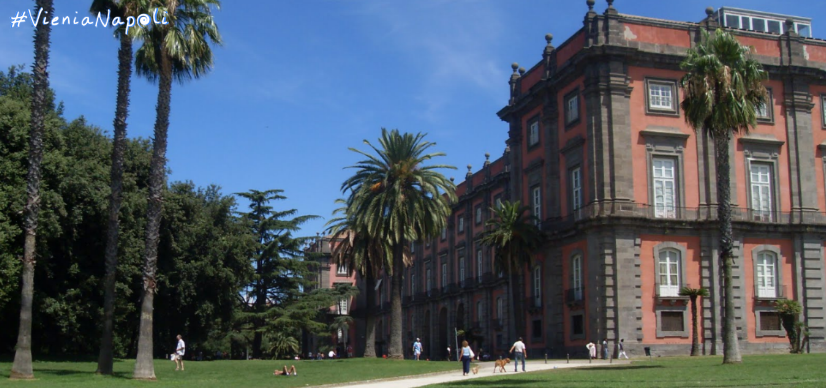 The old Bourbon Royal Palace which houses the Museo di Capodimonte, is one of the most beautiful green spaces in all of Naples. The museum contains some works of great masters of painting, such as Botticelli, Goya, Titian and Caravaggio. Walking through the spacious rooms of the palace, decorated as if the Bourbon family had left the house just before your entrance, takes you back in time. Along the 110 rooms and three floors of the Museum of Capodimonte, winds a path that starts from the main floor with the Farnese Gallery and the Royal Apartment, continues on the second floor with the Neapolitan Gallery and concludes with the nineteenth-century collection and that of Art contemporary. Capodimonte is the only museum in the world where ancient art alongside contemporary. Among the collections of numismatics, ceramics and precious vestments, the Capodimonte Museum offers a wonderful snapshot of Naples that was.
The old Bourbon Royal Palace which houses the Museo di Capodimonte, is one of the most beautiful green spaces in all of Naples. The museum contains some works of great masters of painting, such as Botticelli, Goya, Titian and Caravaggio. Walking through the spacious rooms of the palace, decorated as if the Bourbon family had left the house just before your entrance, takes you back in time. Along the 110 rooms and three floors of the Museum of Capodimonte, winds a path that starts from the main floor with the Farnese Gallery and the Royal Apartment, continues on the second floor with the Neapolitan Gallery and concludes with the nineteenth-century collection and that of Art contemporary. Capodimonte is the only museum in the world where ancient art alongside contemporary. Among the collections of numismatics, ceramics and precious vestments, the Capodimonte Museum offers a wonderful snapshot of Naples that was.
- The Charterhouse of San Martino
 The Charterhouse was enriched over the centuries of an artistic, historical and architectural highly prestigious, between marble and stucco, frescoes and paintings, sculptures and precious furniture. The Neapolitan Republic of 1799 changed his destiny: the brothers accused of republican sympathies, were expelled from the monastery, which after various events, the Unification of Italy, was finally suppressed. The wealth of art treasures united all'incatevole location have made the monastery a favorite, since '500, men of letters, and eduditi travelers. Through the trails you can visitiare objects grouped by the museum's collections in terms of the criteria and to the laws exhibition (topographical, historical, collectable).
The Charterhouse was enriched over the centuries of an artistic, historical and architectural highly prestigious, between marble and stucco, frescoes and paintings, sculptures and precious furniture. The Neapolitan Republic of 1799 changed his destiny: the brothers accused of republican sympathies, were expelled from the monastery, which after various events, the Unification of Italy, was finally suppressed. The wealth of art treasures united all'incatevole location have made the monastery a favorite, since '500, men of letters, and eduditi travelers. Through the trails you can visitiare objects grouped by the museum's collections in terms of the criteria and to the laws exhibition (topographical, historical, collectable).
Castel Sant'Elmo
 It 'a medieval castle, now a museum, situated on the hill of Vomero, in Naples. It was once called Paturcium and stands in the place where there was, in the tenth century, a church dedicated to St. Erasmus (hence Eramo, Ermo and then Elmo). This imposing building (the first castle by extension of the city), in part derived from the rock (Neapolitan yellow tuff), stems from an observation tower called Norman Belforte. Because of its strategic importance, the castle has always been a coveted possession from its position (250 m above sea level) you can control the whole city, the bay, and the roads that lead from the hills surrounding the city. Today the castle, as well as permanent museum, the "Naples twentieth century", is also home to various temporary exhibitions, fairs and events: from 1998 to 2011 during the spring was the seat of the Napoli Comicon (from 2012 that moved to the Show d 'overseas).
It 'a medieval castle, now a museum, situated on the hill of Vomero, in Naples. It was once called Paturcium and stands in the place where there was, in the tenth century, a church dedicated to St. Erasmus (hence Eramo, Ermo and then Elmo). This imposing building (the first castle by extension of the city), in part derived from the rock (Neapolitan yellow tuff), stems from an observation tower called Norman Belforte. Because of its strategic importance, the castle has always been a coveted possession from its position (250 m above sea level) you can control the whole city, the bay, and the roads that lead from the hills surrounding the city. Today the castle, as well as permanent museum, the "Naples twentieth century", is also home to various temporary exhibitions, fairs and events: from 1998 to 2011 during the spring was the seat of the Napoli Comicon (from 2012 that moved to the Show d 'overseas).
Castel dell’Ovo
 Considered the oldest of Naples Castles, Castel dell’Ovo juts out into the bay on the tiny isle of Megaride. The same island where Siren Partenope washed ashore after plunging herself into the sea because she failed to lure Ulysses. The same siren that gave Naples its first name, Partenope. It was the infamous Roman poet Virgil (Oct 15, 70 BC – Sept 21, 19 BC) and the legend of his magical, mythical egg however, that gave Castel dell’Ovo, the Egg Castle it’s name. The legend has it that Virgil placed an egg into a glass jar, the jar into a metal cage and hid it beneath the castle. As long as the egg remained safe and intact, the city would too. The only flaw with this myth of course, is that Virgil lived long before Castel dell’Ovo was actually a castle. What stood on Megaride during Virgil’s time was Castellum Lucullanum, an expansive villa built by the Roman knight and patrician Lucius Licinius Lucullus (c. 117BC – 57/56 BC). By the 5th century BC however, this Roman playground had lost its allure and it had been converted to a fort. The perfect location for a prison it seems, as it was here that the last Roman Emperor Romolus Augustolus was exiled and imprisoned until his death. Transformed into a castle by Roger the Norman in the 12th century, all those who followed added their own touches and uses. It’s use as a prison however continued until the 19th century. Today, the prison cells are long gone and the halls of Castel dell’Ovo are home to temporary art exhibits and events like Vitigno Italia, a wine trade fair and show.
Considered the oldest of Naples Castles, Castel dell’Ovo juts out into the bay on the tiny isle of Megaride. The same island where Siren Partenope washed ashore after plunging herself into the sea because she failed to lure Ulysses. The same siren that gave Naples its first name, Partenope. It was the infamous Roman poet Virgil (Oct 15, 70 BC – Sept 21, 19 BC) and the legend of his magical, mythical egg however, that gave Castel dell’Ovo, the Egg Castle it’s name. The legend has it that Virgil placed an egg into a glass jar, the jar into a metal cage and hid it beneath the castle. As long as the egg remained safe and intact, the city would too. The only flaw with this myth of course, is that Virgil lived long before Castel dell’Ovo was actually a castle. What stood on Megaride during Virgil’s time was Castellum Lucullanum, an expansive villa built by the Roman knight and patrician Lucius Licinius Lucullus (c. 117BC – 57/56 BC). By the 5th century BC however, this Roman playground had lost its allure and it had been converted to a fort. The perfect location for a prison it seems, as it was here that the last Roman Emperor Romolus Augustolus was exiled and imprisoned until his death. Transformed into a castle by Roger the Norman in the 12th century, all those who followed added their own touches and uses. It’s use as a prison however continued until the 19th century. Today, the prison cells are long gone and the halls of Castel dell’Ovo are home to temporary art exhibits and events like Vitigno Italia, a wine trade fair and show.
"The Art Ways" - the Open-Air Museum in the Old Centre and the Decumans
 The area of the old town centre was that of the first settlement of Neapolis (5th century BC), the "new city", so called to distinguish it from Palepolis, the old city that stood in the area of Pizzofalcone. The urban plan of Neapolis was that of a "chessboard" formed of three wide roads from east to west, called "decumans": the upper decuman (Via Sapienza, Via Pisanelli, Via Anticaglia, etc.), the main decuman (Via Tribunale), and the lower decuman (Via B. Croce, Via S. Biagio dei Librai, etc.) intersected by a series of connecting roads from north to south called "cardines" (cardinal points). The old town centre of Naples is very different from that of other Italian towns: there are stratifications of various ages beginning from the Greaco-Roman period up to today.
The area of the old town centre was that of the first settlement of Neapolis (5th century BC), the "new city", so called to distinguish it from Palepolis, the old city that stood in the area of Pizzofalcone. The urban plan of Neapolis was that of a "chessboard" formed of three wide roads from east to west, called "decumans": the upper decuman (Via Sapienza, Via Pisanelli, Via Anticaglia, etc.), the main decuman (Via Tribunale), and the lower decuman (Via B. Croce, Via S. Biagio dei Librai, etc.) intersected by a series of connecting roads from north to south called "cardines" (cardinal points). The old town centre of Naples is very different from that of other Italian towns: there are stratifications of various ages beginning from the Greaco-Roman period up to today.
The Neapolitan Crypt
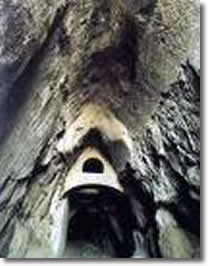 Behind Mergellina railway station is the small but suggestive Parco Virgiliano, so inappropriately named because it dates only from 1930, the occasion of the two thousandth anniversary of the birth of the poet. A walk along the avenue brings one to the tomb of the great poet Giacomo Leopardi.
Behind Mergellina railway station is the small but suggestive Parco Virgiliano, so inappropriately named because it dates only from 1930, the occasion of the two thousandth anniversary of the birth of the poet. A walk along the avenue brings one to the tomb of the great poet Giacomo Leopardi.- Further along the avenue one comes to the entrance called the "Neapolitan Crypt". This gallery was dug out at the end of the 1st century AD to facilitate links between Neapolis and Puteoli, avoiding the winding roads and steep ascents of the "Via Antiniana per colles", which went to Fuorigrotta by way of the Vomero hill. The present-day gallery is about 700 metres long, from 4 to 5 metres wide and from 5 to 20 metres high. Illumination was given by torches and two light shafts.
- Useful information about its construction is given by Strabone. The works were overseen by Luccio Cocceio Aucto, who created many other galleries in the Phlegraean area (between Cuma and Averno, for example). The finding of a marble bas-relief of the god Mitra, attributed to the 3rd century BC, has led us to hypothesise the existence of a place of worship in a ravine. According to some writers, the gallery served in ancient times as a place of rituals dedicated to Priapo, son of Dionisius and Aphrodite, god of fertility, with their night phallic rituals.
- The Neapolitan Crypt continued to play a role until the beginning of the 20th century. Near the entrance there is a funeral monument at a higher level from the more ancient one. Tradition says that this was the Sepulchre of the great poet Virgil , but this can be neither confirmed or disproved. The vault lined with burial niches must have been the property of a family of great civil or religious importance. The Mantuan poet had a predilection of Naples where he had learned Epicurean philosophy from Sirone the Greek; he had already composed the Georgics and also various passages of the Aenid in which the area of Phlegraea appears. His death was described by his biographers as follows: having left Greece on a study trip, the poet fell seriously ill and died in Brindisi on the return journey, in 19 AD at the age of 51.
- His remains were transported to Naples and placed in the sepulchre on Via Puteolanain the villa that Sirone had acquired. Many men of letters and poets have worshipped in this tomb - Stazio, Silio Italico, Pliny the Younger and others. In medieval times, Virgilwa seen as a performer of miracles and a magician; his remains are said to have been transferred and concealed in the Castel dell'Ovo for fear of their being stolen - in the castle which, according to the legend, had been built on a magic egg placed in its foundations.
- In 1688 Pedro of Aragon had the height of the gallery lowered by 11 metres, so that the sepulchre was suspended from above. There followed endless discussion on the identification of the location of the poet's sepulchre, until in the years of the two thousandth anniversary of the birth of Virgil, the vault was restored and given its present-day appearance.
Via Tribunali
 The main decumanus is an important street of the historical center of Naples. Together with the lower and upper decumanus, it represents the main road of the ancient Greek city system. The road, urbanistically the most important of the three, is the heart of the decumanus of Naples. The decumanus, which was declared a World Heritage Site in 1995, corresponds to Via dei Tribunali, moreover, it follows the ancient Greek road system. Because it has Greek origins, it would be more proper to name it "plateia", not "decumanus", since "decumanus" is a denomination belonging to the Roman period. The decumanus starts in Port'Alba and Piazza Bellini (which includes the first Greek walls of the historic center of Naples), continuing along Via San Pietro a Majella and Via Tribunali, which intersects with Via Duomo and it finishes in Castel Capuano. This is the reason why the street is called since the 16th century Via Tribunali (literally Street of the Courts). In fact, the Castel Capuano, since the beginning of the sixteenth century and by order of Don Pedro of Toledo, assumed the role of the court in the city. In a central location of Via Tribunali there is San Gaetano Square, which rises in the area of the Greek agora, which later became forum during the Roman period. In the square there are the entrances to Naples undergorund and to San Lorenzo ruins, which offer to visitors the attestation of the Greek origins of Naples. The street was severely disfigured at the Piazza Miraglia with the construction of the the Policlinico Hospital in the late 19th century. The construction of this Hospital, destroyed a huge amount of historic buildings, as cloisters, causing demage to the artistic and architectural heritage of the street. The decumanus is divided into two section: on the one hand a short section which starts in Port'Alba and San Pietro a Majella, on the other hand, Via Tribunali, that finishes in Forcella, in front of Capuano Castel. The squares crossed by Via Tribunali are: San Gaetano Square, which leads to San Gregorio Armeno, the "stenopos" that blends the main andthe lower decumanus on the one hand, and the Girolamini and Riario Sforzasquare on the other hand.
The main decumanus is an important street of the historical center of Naples. Together with the lower and upper decumanus, it represents the main road of the ancient Greek city system. The road, urbanistically the most important of the three, is the heart of the decumanus of Naples. The decumanus, which was declared a World Heritage Site in 1995, corresponds to Via dei Tribunali, moreover, it follows the ancient Greek road system. Because it has Greek origins, it would be more proper to name it "plateia", not "decumanus", since "decumanus" is a denomination belonging to the Roman period. The decumanus starts in Port'Alba and Piazza Bellini (which includes the first Greek walls of the historic center of Naples), continuing along Via San Pietro a Majella and Via Tribunali, which intersects with Via Duomo and it finishes in Castel Capuano. This is the reason why the street is called since the 16th century Via Tribunali (literally Street of the Courts). In fact, the Castel Capuano, since the beginning of the sixteenth century and by order of Don Pedro of Toledo, assumed the role of the court in the city. In a central location of Via Tribunali there is San Gaetano Square, which rises in the area of the Greek agora, which later became forum during the Roman period. In the square there are the entrances to Naples undergorund and to San Lorenzo ruins, which offer to visitors the attestation of the Greek origins of Naples. The street was severely disfigured at the Piazza Miraglia with the construction of the the Policlinico Hospital in the late 19th century. The construction of this Hospital, destroyed a huge amount of historic buildings, as cloisters, causing demage to the artistic and architectural heritage of the street. The decumanus is divided into two section: on the one hand a short section which starts in Port'Alba and San Pietro a Majella, on the other hand, Via Tribunali, that finishes in Forcella, in front of Capuano Castel. The squares crossed by Via Tribunali are: San Gaetano Square, which leads to San Gregorio Armeno, the "stenopos" that blends the main andthe lower decumanus on the one hand, and the Girolamini and Riario Sforzasquare on the other hand.
The main buildings of Via Tribunali are:
Santa Maria della Mercede Church and Sant'Alfonso Maria de' Liguori;
Sant' Antonio delle Monache a Port'Alba Complex;
San Pietro a Majella Conservatory;
San Pietro a Majella Church;
Crocedi Lucca Church;
Pontano Chapel;
Santa Maria Maggiore alla Pietrasanta Church;
Spinelli di Laurino Palace;
Filippod'Angiò Palace;
San Paolo Maggiore Basilica;
San Lorenzo Maggiore Basilica;
Santa Maria delle Anime del Purgatorio ad Arco Church;
Girolamini Church;
Santa Maria della Colonna Church;
Cathedral of Naples (Duomo);
Caracciolo di Gioiosa Palace;
Pio Monte della Misericordia;
Santa Maria della Pace Church;
Santa Maria del Refugio Church;
San Tommaso a Capuana Church;
Monte dei Poveri Chapel;
Capuano Castle;
San Gaetano Obelisk;
San Gennaro Obelisk.
Worship buildings along Via Tribunali
In Via Tribunali there are many religious buildings. Among them there are: San Paolo Maggiore Basilica, San Lorenzo Maggiore Basilica and Girolamini Church. The San Paolo Maggiore Church arises where the Tample of Castor and Pollux was. The Basilica was built at the end of the 7th centuryin the area where the Greek agora was. The Church has three aisles and it houses works by Stanzione, Vaccaro and Solimena. In front of the San Paolo Maggiore Basilica there is San Lorenzo Maggiore Basilica, that is one of the oldest churches in Naples, in fact it was built in the 12th century. The church, which is described as a "graceful and beautiful temple" by the writer Boccaccio, according to its architecture of its apse can be considered a unique example in Italy, since it was built following the French Gotic style. Girolamini Church, because of historic, artistic and cultural reasons, can be considered the most important worship place in Naples. The Girolamini Complex houses the oldest library in the city and an important gallery where paintings of the 17thcentury are collected.


